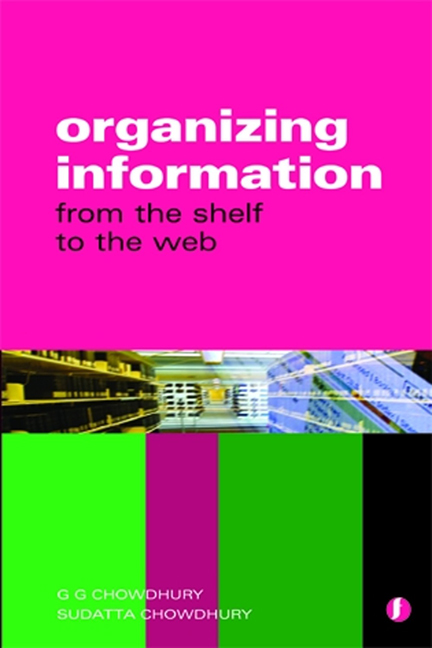Book contents
- Frontmatter
- Dedication
- Contents
- Preface
- Glossary
- 1 Organizing information: what it means
- 2 Information organization in non-library environments
- 3 Cataloguing
- 4 Bibliographic formats: MARC 21 and others
- 5 Library classification
- 6 Subject heading lists and thesauri in information organization
- 7 Organization of internet information resources
- 8 Metadata
- 9 Markup languages
- 10 Ontology
- 11 Information architecture
- 12 The semantic web
- 13 Information organization: issues and trends
- Index
12 - The semantic web
Published online by Cambridge University Press: 10 September 2022
- Frontmatter
- Dedication
- Contents
- Preface
- Glossary
- 1 Organizing information: what it means
- 2 Information organization in non-library environments
- 3 Cataloguing
- 4 Bibliographic formats: MARC 21 and others
- 5 Library classification
- 6 Subject heading lists and thesauri in information organization
- 7 Organization of internet information resources
- 8 Metadata
- 9 Markup languages
- 10 Ontology
- 11 Information architecture
- 12 The semantic web
- 13 Information organization: issues and trends
- Index
Summary
Introduction
Within the last decade the web has grown faster than any other technology and it has now entered and influenced virtually all areas of modern life. The volume of information available on the web is huge and growing. Creation and distribution of material on the web can be achieved by any individual or institution, ranging from the school child to the professional; from big companies to academic and research institutions, governments, and national, regional and international organizations. Easy creation of, and access to, information resources on the web has been possible due to the development and use of some simple technologies, mainly HTML and related markup language technologies and protocols like HTTP. We can access information resources anywhere on the web using web search tools. While the web has indeed made our life a lot easier in terms of the creation, distribution and use of electronic information, current web technology does not allow computers to integrate and process data semantically across the internet. Tim Berners-Lee, the originator of the web, envisages the semantic web as a web of ‘machine-readable information whose meaning is well defined by standards’ (Berners-Lee, 2003, ix). The semantic web is based on interoperable technologies and infrastructure that will allow computers to integrate and process information according to its meaning and intended use. This chapter provides an introduction to the concept of the semantic web. It begins with a discussion of the basic concept of semantic web and how it differs from the conventional web. It then summarizes the basic semantic web technologies, particularly RDF and OWL; and, finally, discusses these with special reference to the processing of, and access to, electronic information based on semantics or meaning.
What is the semantic web?
This is a controversial issue; some say that the semantic web is still a concept we are far from making a reality, while others, including W3C, claim that we have already developed a number of tools and appropriate technologies that can be used to realize at least some of its goals. This chapter and Chapter 13 outline the latest developments in technology and its applications that are leading towards semantic information access and management.
- Type
- Chapter
- Information
- Organizing InformationFrom the Shelf to the Web, pp. 197 - 212Publisher: FacetPrint publication year: 2013



